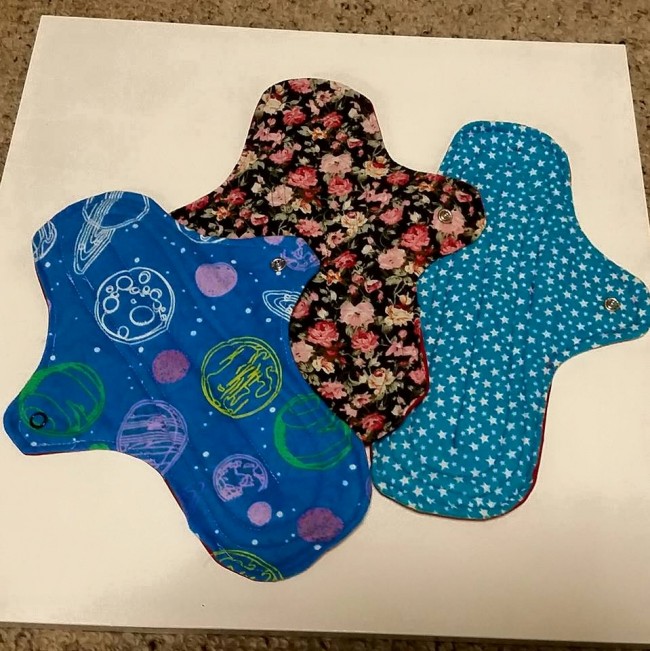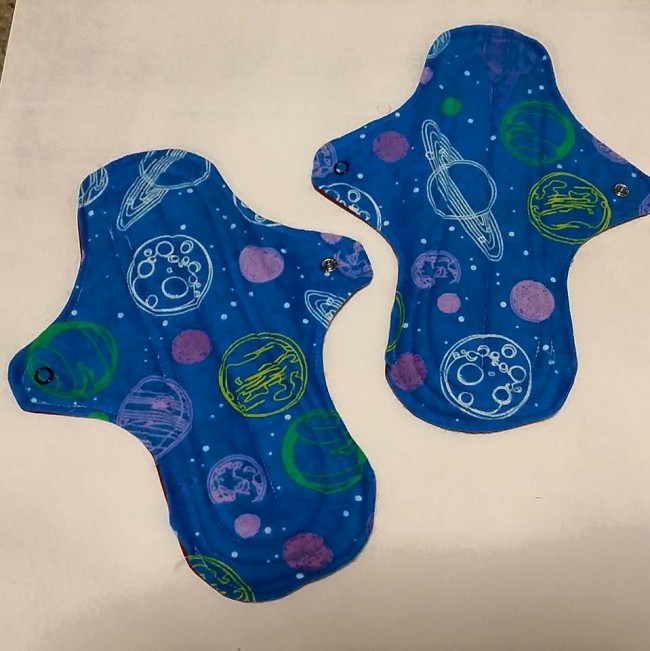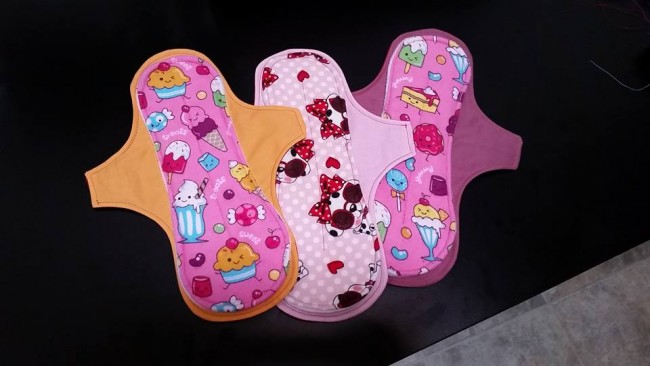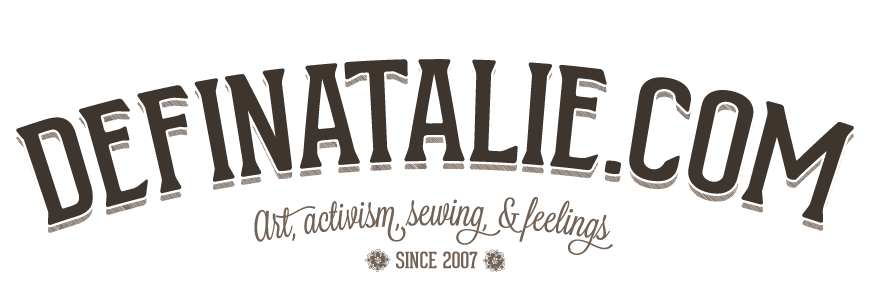[Content note: this post discusses menstruation and sanitary products.]
I switched to a menstrual cup a few years ago and never looked back. I’m not the most ardent environmentalist in the world but packaging waste makes me feel anxious, and knowing how many plastic wrappers I was sending into landfill didn’t sit well with me. Another bonus to switching to a reusable menstrual product: saving money. I love saving money, because it means I can spend it on other things that I might not have otherwise had the money for.
When my shoulder and back pain got really bad a year ago, it was harder to use the cup; panic would overtake me as I squatted in the shower unable to extract it. It was going to stay inside me forever. And ever. This immovable cup would cause a back up of uterine lining and I would one day squirt blood out of my eyes like that horned lizard from The X Files. Or I could ask Nick to help me. Both options were terrifying.
In my transition to reusable menstrual products I came across cloth pads and dismissed them largely because it seemed like a hassle to clean them. I wasn’t a hippie, just a poor lefty feminist, and cloth pads were at the bridge before you got to moon paintings. After realising I couldn’t continue with the cup due to my shoulder I remembered cloth pads and did a bunch of research.
There are lots of positives about using cloth pads: cheaper, reduced rubbish, sewing/ buying your own customised pads is fun, tailored pads to suit your body shape, cloth feels nicer than plastic, no adhesive/ plastic rashes, you’ve always got a stash handy, plus more and more. Some people say their cramping and period length are reduced but no studies conclusively prove this, nor have I experienced this. At the end of the day, if you find something that works for you, then that’s all that matters.
For a bunch of fabric sewn together and wrapped around your underwear gusset, cloth pads can be completely confusing. I’ve sewn since I was 15 but this was a new world of absorbancy, dryness, leakproofness, and of all things… press snaps. It can involve quite an initial outlay of money for specialty materials but when you work out the cost per pad, then a cost per use, it becomes more affordable. I wanted to Do Everything Right. I didn’t want surprise leaks or traveling pads landing on the floor.

There are many patterns for pads available online, but since I’m fat I didn’t want to mess around. I traced the crotch of my own underwear and added wings long enough to wrap around the gusset and close with a press snap. I put about six layers of cotton fleece and microfleece inside as the core, topped it with flannel and backed it with PUL (a waterproof fabric), using this tutorial as a rough guide. Then I got out my hammer and made a lot of noise inserting the snaps. Voila! My debut on the cloth pad scene.
People make cloth pads out of all kinds of fabric. I have even seen Minion and Donald Trump pads. I can’t quite tell if it’s because they like the subject matter… or really hate them. My work has stocked really cute flannelette in the last year so I’ve been able to get some great prints! Some people prefer using quilting cotton for the pad top, because of the range of prints available, but you can also use old clothing. I got really anxious about the core fabrics when I started and bought some stuff called microfleece; apparently it’s more of a wicking fabric and not an absorbent fabric so may have a tendency to leak under compression. It’s worked fine for me. In fact, so long as there is some kind of fabric there and you swap it out every so often, you probably won’t leak even if you don’t buy specialty fabrics.

If you’re sewing your first couple of pads don’t focus too much on getting just the “right” fabrics, just give it a go. The esoteric language of the world of cloth pad making really puts many people off! Gather some flannelette, polar fleece, regular cotton fleece and some press snaps. You don’t need those fancy resin snaps and a big commercial snap press. Metal snaps, a setting tool and a hammer do just as well. Down the track you might want to experiment with stuff like Zorb, Windpro and PUL fabric but to begin just use the most accessible materials. I found it too easy to get overwhelmed, and the only reason why I didn’t give up is because I did not want to go back to disposable pads.
And how have I found my cloth pads after nearly a year of use? They are very effective. I haven’t bled on any couches or skirts; and the cleaning process isn’t as gross as I thought it’d be. I stash my used pads in a bag under the sink and wash them every couple of days; first wash is cold with regular detergent and any oxy-action product, then second wash is hot with more detergent and sometimes borax. I am not too fussed with stains, honestly, but a big bake in the sun does wonders for lifting much of it. I remember the sickly smell of used disposable pads and was very surprised that used cloth pads smelt different. Not scent free, but not terrible either.
If you don’t have access to a sewing machine or find the idea of making your own pads too scary, you can always buy some ready-made ones from the hundreds of pad makers on etsy. There are so many different designs and shapes! It may seem like the price is expensive but remember, with proper care you’ll be using these pads for years.

This past weekend I had a terrible sinus headache and I wanted something mindless to do, so I cut out a bunch of material and attempted to make a second style of pads to add to my stash. I wanted to attempt an “exposed core” style, and I wanted to try my hardest to produce a nice outcome. My first pads were hastily sewn and I didn’t iron a damn seam. This time I spent ages at the ironing board, and the result is a less bulky and far crisper looking pad. In fact, 18 cloth pads in total. And then I spent a morning hammering in snaps while Nick was watching Daytona (HA!)

I could probably write about this forever, but I’m wary of completely inundating you with TMI. I got a lot of advice from the Sewing Cloth Menstrual Pads group on fb, they have an extensive knowledge library in the files with a lot of free patterns, and the admins work very hard to make it a trans inclusive space. Obsidian’s Reusable Menstrual Products site has a wealth of information too.
For my next set of pads I might try toning the toxic levels of cuteness down. I certainly won’t be sewing Minions, Donald Trump or any of Australia’s wretched political leaders into my cloth pads. My vagina is too precious for that.


I only use cloth pads (granted, I’ve had an IUD for a few years so I barely have any period at all any more). I started when my daughter was a baby – we decided to use cloth diapers for environmental and money-saving reasons, and so it made sense to switch myself to cloth, too. They perform just as well (cloth diapers, in my experience, perform way WAY better than disposable). Plus they are so much cuter (both diapers and pads)! Yours look adorable.
Thank you for posting this! I have been looking into making my own, and have found a few patterns and attempted a couple, but haven’t been very confident with it all. I’ve just joined the Facebook group, so I think my next attempt will be much more successful!
Wow Nice work..
Pakistani Chat Rooms